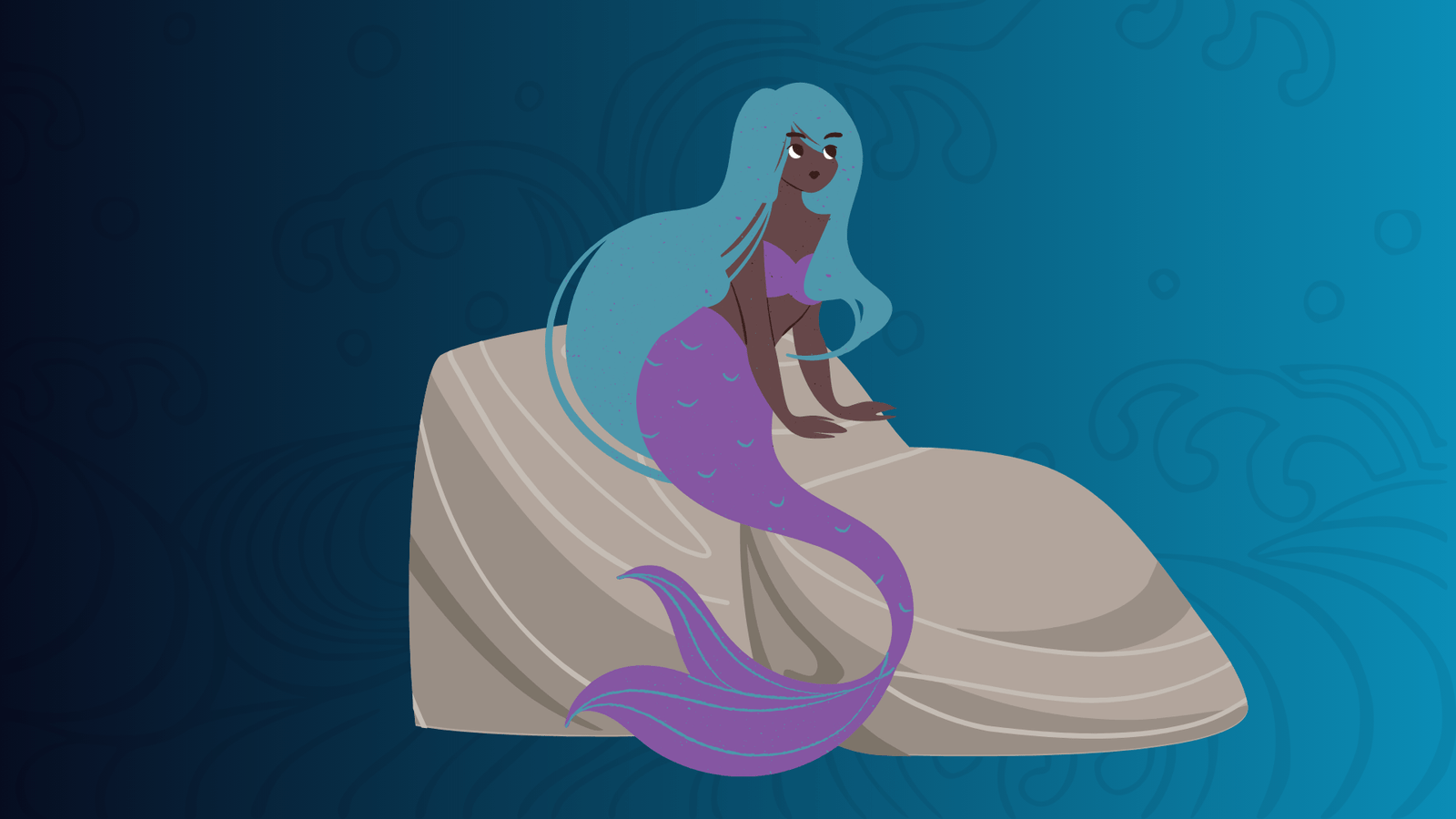Mermaid Mythology: Guardians of the Ocean and Heart
- Name: Mermaid
- Alternate Names: Siren (Greek), Havfrue (Scandinavian), Ningyo (Japanese)
Mermaids have captivated human imagination for thousands of years, known by different names and interpretations across cultures. The graceful Havfrue of Nordic traditions embodies both beauty and peril, while Japan’s mesmerizing Ningyo offers promises of fortune or curses of eternal suffering. Their legends, spanning continents, reflect the sea’s allure as well as its mysteries and dangers.
Ancient Origins and Early References
Mermaid legends can be traced back to some of the earliest civilizations, evolving in diverse ways:
- Mesopotamian Lore: Around 1000 BCE, the goddess Atargatis was depicted as a mermaid-like being, reflecting humanity’s fascination with the sea and its mysteries.
- Greek Mythology: Often confused with sirens, mermaids were portrayed as beautiful beings who enchanted sailors, sometimes leading them to peril.
- Nordic Folklore: The Havfrue (“sea maiden”) was considered both a benevolent guide for fishermen and a herald of doom, depending on the tale.
Symbolism
Mermaids are rich in symbolism, embodying a duality that reflects human emotions and nature itself:
- Beauty and Danger: They symbolize irresistible allure combined with the unpredictable dangers of the sea.
- Transformation and Freedom: As creatures of two realms land and sea, they represent a longing for freedom, exploration, and change.
- Guardians of Nature: Many legends depict mermaids as protectors of the oceans, warning humans against exploiting natural resources.
Fun Facts
- In Japanese Folklore, the Ningyo is a mermaid-like creature whose capture is said to bring good fortune, but whose consumption is cursed.
- During his explorations, Christopher Columbus reported seeing mermaids, which were likely manatees, showing how these legends may have been influenced by real-world encounters.
- The term “mermaid” comes from Old English mere (sea) and maid (young woman), emphasizing their human-ocean connection.
Cultural Depictions
Mermaids have a rich presence in stories, art, and traditions:
- Greek and Roman Art: Depicted as beautiful sea nymphs accompanying Poseidon, mermaids were seen as extensions of the ocean’s mystique.
- Nordic and Slavic Legends: Mermaids like the Rusalki (Slavic) were tied to water bodies, often reflecting themes of love, revenge, or redemption.
- Modern Media: From the Disney classic The Little Mermaid to the darker portrayals in Pirates of the Caribbean, mermaids remain central to modern storytelling.
Mystical Interpretations
In spiritual and mystical traditions, mermaids embody emotional depth and intuitive energy:
- Intuition and Mystery: Mystics often link mermaids to the subconscious mind and emotional healing, representing the depths of human emotion.
- Astrological Connections: Mermaids are frequently associated with water signs like Pisces, symbolizing flow, transformation, and sensitivity.
Modern Mermaid Lore
The allure of mermaids persists, inspiring new interpretations and hobbies:
- Environmental Symbols: Mermaids have become icons for ocean conservation efforts, reminding us of the fragile beauty of marine ecosystems.
- Mermaiding: A global trend where enthusiasts don mermaid tails and perform underwater, blending fantasy with athleticism.
- Unexplored Mysteries: Despite their mythical origins, some believe mermaids could exist in the unexplored depths of the ocean, fueling endless curiosity and wonder.
Mermaids endure as timeless symbols of transformation, beauty, and the mysteries of the sea, captivating audiences across generations and cultures.

